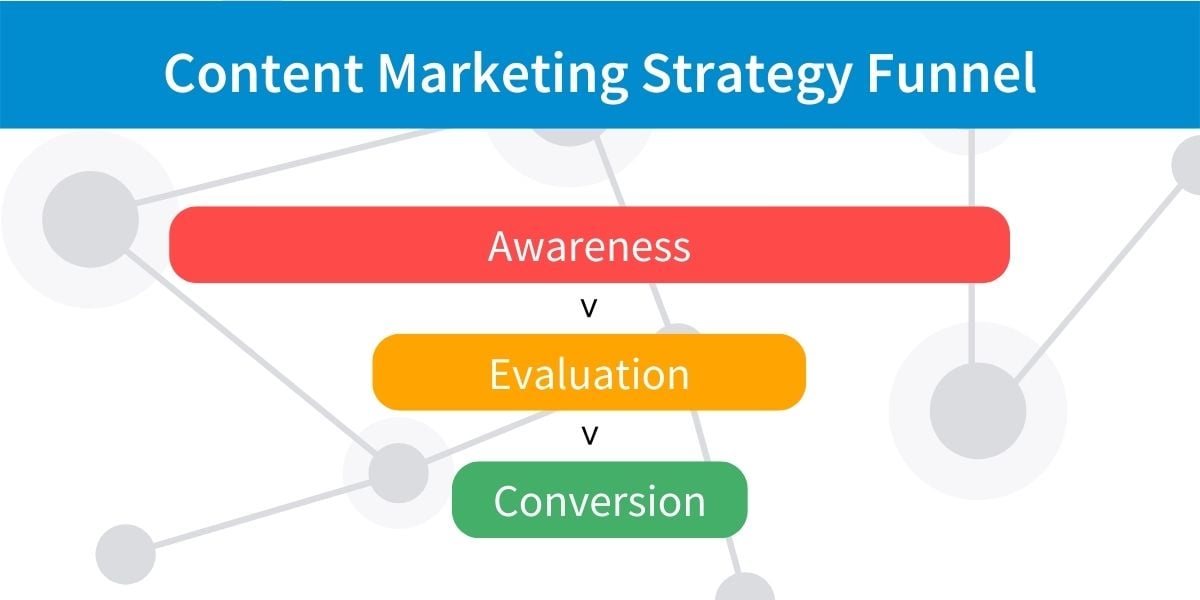How Does an SEO Content Strategy Work?
May 29, 2020 •DJ Team

A content strategy is the plan your business makes to create blog and website content, video content, post on social media, and ultimately gain leads through digital content marketing.
But without a SEO game plan that informs your content strategy, you have no guarantee that your content will rank on search engines, unless you back it up with a hefty pay-per-click budget. And considering the first five organic results in a web search get 67% of the clicks, pay-per-click isn’t nearly as likely to get your content in front of customers as organic ranking. Here’s how an SEO content strategy works, and what you can do to create one.
What is a content marketing plan?
All content marketing needs to start with digital content strategy research. This means understanding your audience first and foremost using consumer insights. What questions are they asking that relate to your products or services? And what answers do they consume and resonate with the most? Researching what other content is available and popular will help you create a list of topics you want to cover for your audience—the start of your content marketing plan.
Why do you need a content marketing strategy?
As much as it would be easy to just write on the topics and post on your blog or website, this is when the SEO strategy questions need to enter the picture. Now that you’ve determined the topics you need to cover to attract your potential customers, you have to wonder how they are finding the answers. This insight comes in the form of knowing both short and long-tail keywords your target customers use to search and find you or your competitors.
Long-tail keywords are those that are three or more words long. These are proven to get more clicks than short-tail keywords that inform more generic searches. For instance, don’t just write about “popular sneakers”—think about “popular sneakers for kids,” “popular sneakers for sports,” or whatever makes sense for your audience. Keyword research will help you focus your list of topics and develop a content creation strategy.
What is a content strategy framework?
The basic content marketing strategy template is three parts or phases, with customers getting more likely to do business with you as they move down the “funnel.”

Top of the Funnel: Awareness
Content at the beginning of your customer journey needs to help your audiences become aware of the problem, and the solution your brand provides. One powerful source of top of funnel awareness is your weekly blog or other regular content like podcasts, as well as the accompanying social media copy used to promote and share that content. Remember that everything from your titles to the metadata and images need to be optimized for keywords to help search engines rank your content.
Middle of the Funnel: Evaluation
Now that you have potential customers who are aware of your brand, the next step is to provide them with resources that help them evaluate your offering and choose you over your competitors. While your social media strategy framework might have started building awareness earlier in the funnel, social media updates about your activities and projects can really work well in this phase to show your brand’s authenticity and realness.
But your most important middle of the funnel tool is your website itself, including testimonials and case studies that prove your experience and eligibility. Your website is the hub of the whole digital content marketing endeavor, one that affirms and broadcasts your digital presence to everyone.
Bottom of the Funnel: Conversion
Where on your website do customers go to make a buying decision? Is it a contact form, a shopping cart, or a profile creation portal? Whatever the answer, that needs to be the point at the bottom of your funnel that all content is driving to. Use testing to see which calls to action inspire your audience the most and close the loop on their journey through your content.
What is included in a content strategy?
Audience research and personas, topic generation, keyword research—the answer is that a SEO content strategy includes a lot of work! SEO content strategies function by focusing on the topics that audiences care about and including the keywords audiences use around those topics. It’s definitely worth doing right, but that doesn’t mean it has to be difficult. Remember, your content strategy should include the following:
- Topics determined based on audience research
- Long- and short-tail keywords your audiences prefer to use
- Blog posts and promotional content that increase brand awareness
- Web content and social media that help prospects evaluate your brand
- Calls to action and lead generation materials that convert readers into customers
With the items on this list, you’ll be on your way to executing a robust and effective SEO content strategy.

Content Strategy Definition Made Simple
We created the DemandJump platform to take some of the early-stage legwork out of content strategy creation and provide clients with an eagle-eye view of what customers online are looking for. Plus, we’ll help you see how competitors are answering their questions and how your SEO content strategy could break the mold and stand out from the crowd. Start your free trial and get 4 FREE SEO content outlines on any topic important to you.
Featured Articles
Categories
- Attribution Tracking (13)
- Channel Optimization (11)
- Consumer Insights (68)
- Content Marketing (251)
- Data Science (8)
- Digital Marketing (6)
- Digital Transformation (26)
- Enterprise (10)
- Lead Generation (14)
- Market Intelligence (8)
- Marketing Analytics (39)
- Marketing Attribution (57)
- Marketing Management (153)
- Marketing Operations (86)
- Organic Search (222)
- Paid Search (52)
- Pillar-Based Marketing (63)
- Programmatic Advertising (9)
- SaaS Content (14)
- SaaS Marketing (29)
- Search Marketing (111)
- SEO Keyword Research (28)
- SEO Pillar (18)
- SEO Strategy (46)
- SMB (5)
- Website Content (12)

